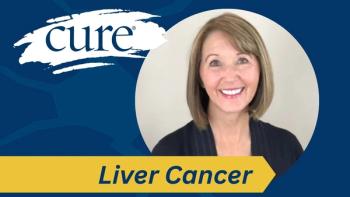
Drug Duo Granted Priority Review for CLL Treatment
The FDA has granted a priority designation to a supplemental new drug application (sNDA) for Imbruvica (ibrutinib) for use in combination with Gazyva (obinutuzumab) for the frontline treatment of adult patients with chronic lymphocytic leukemia (CLL) or small lymphocytic lymphoma (SLL).
The FDA has granted a priority designation to a supplemental new drug application (sNDA) for Imbruvica (ibrutinib) for use in combination with Gazyva (obinutuzumab) for the frontline treatment of adult patients with chronic lymphocytic leukemia (CLL) or small lymphocytic lymphoma (SLL).
The sNDA is based on data from the phase 3 iLLUMINATE (PCYC-1130) trial, which showed that frontline treatment with Imbruvica combined with Gazyva significantly improved progression-free survival (PFS) compared with chlorambucil plus Gazyva in patients with CLL/SLL. AbbVie (Pharmacyclics) and Janssen Biotech, the codevelopers of Imbruvica, reported in a press release that the data from the study will be shared at a future medical meeting.
Under the priority designation, the FDA will review the sNDA within six months from the acceptance of the filing, compared with the standard 10 months.
"Our robust clinical research program with Imbruvica continues to reinforce the evidence for its use as an efficacious treatment option in CLL and SLL, this time versus a National Comprehensive Cancer Network guidelines Category 1 treatment, which is the chemoimmunotherapy combination of chlorambucil plus obinutuzumab," Danelle James, M.D., head of Clinical Science, Pharmacyclics, said in a press release.
"Further, for the first time in CLL, results from iLLUMINATE have shown the potential benefits of using an Imbruvica-based, chemotherapy-free, anti-CD20 combination. Since its initial approval five years ago, Imbruvica has received nine FDA approvals across six different diseases, and we remain committed to advancing new research to understand its full potential in blood cancers like CLL and SLL, as well as other difficult-to-treat diseases with unmet medical needs," added James.
The open-label, multicenter, phase 3 iLLUMINATE trial (
Phase 2 data from the Icll-07 Filo study (
Per the Binet staging system, 8.2 percent of patients were stage A, 67.2 percent were stage B, and 24.6 percent were stage C. Ninety-nine percent of patients had an ECOG performance status of 0 or 1, with one patient having an ECOG performance status of 2. Twenty-five patients had del11q, 51 had del13q, and 21 had trisomy 12. Ten patients had a complex karyotype (at least three abnormalities).
At nine months’ follow-up, the ORR was 100 percent among 73 evaluable patients. The response rate comprised a complete remission rate of 37 percent and a partial remission rate of 63 percent. However, the researchers did note in the conclusion of their ASH abstract that, “The majority of the patients required subsequent immunochemotherapy because of detectable bone marrow minimal residual disease.”
There were 24 serious adverse events related to treatment, with the most common being cardiac events (five patients), grade 3 tumor lysis syndrome (three patients), grade 4 febrile neutropenia (three patients) and grade 3 neutropenia (two patients). There were two on-study patient deaths at the data cutoff, one of unknown cause and one of a brain hemorrhage after a fall on the stairs not caused by the therapy.
Michael Choi, M.D., UC San Diego Medical Center, commented on these initial Icll-07 Filo study data in an Insights segment on OncLive.
“This trial had all patients receive obinutuzumab and ibrutinib in combination at first with the thought that patients who have detectable disease would then receive standard chemoimmunotherapy afterwards with the goal of ultimately achieving MRD-negative remissions,” said Choi.
“They’ve reported on the patients up until that first endpoint with the combination of ibrutinib and obinutuzumab. They also reported the universally successful outcomes with a 100 percent response rate. But they did note that not all patients, or not many patients, achieved that MRD negativity—I think it was about 10 percent or so. So, they did note that most of the patients still needed to receive chemoimmunotherapy afterwards with the goal of achieving MRD negativity. I do think that this study is still successful in showing the feasibility of that combination and the safety of that combination, as well as that the combination did achieve high response rates.”




